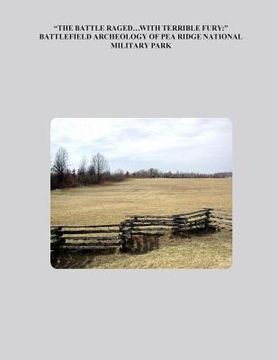"The Battle Raged... With Terrible Fury: " Battlefield Archaeology of Pea Ridge National Military Park
Synopsis ""The Battle Raged... With Terrible Fury: " Battlefield Archaeology of Pea Ridge National Military Park"
The first years of the Civil War in the west focused on the question of the allegiance of Missouri. Southern sympathizers in the state wished to secede and join the pro-slavery cause, but were prevented from doing so by a large Unionist population focused in St. Louis and in other areas of the state. The August, 1861 battle of Wilson's Creek did little to settle the question, as neither side gained complete control of the state. A strong Union military presence, centered in St. Louis, governed that city and the Missouri River Valley (Shea and Hess 1992:1). The southwest corner of Missouri, on the other hand, remained under the sway of the Missouri State Guard (MSG), the state's militia, under the command of Major General Sterling Price, a Mexican War general and former governor. The MSG was, on the surface, endeavoring to maintain Missouri neutrality by keeping Missouri free of a strong presence of either combatant. In actuality, the Guard and its command structure were pro-Confederate, and, from the outset of hostilities actively sought and received assistance from the Confederate government (Piston and Hatcher 2000:33). The Federals began a campaign in early 1862 bent on dispersing the Guard or driving it from the state. That campaign would carry over into Arkansas, where it would culminate at the battle of Pea Ridge.Pea Ridge was one of the largest battles to take place west of the Mississippi River, and certainly the most important strategic victory in the western South during the war (Figure 1). The Federal victory there secured Missouri for the North, and safeguarded St. Louis, a major transshipment point and a base of supply for later campaigns down the Mississippi River. The defeated Confederates shifted their attention away from Arkansas towards Tennessee and Mississippi, draining the region of most of its troops. Much of the fighting in Arkansas later in the war took place either between small armies, or between groups of partisans loyal to either side. In both Missouri and Arkansas, these partisan groups initiated a brutal form of warfare that closely resembles more recent episodes such as the conflict in the former Yugoslavia and Iraq.Human occupation of northwestern Arkansas began by 5,000 years ago and continued uninterrupted until the present. This project focuses on one aspect of that occupation, the March, 1862 battle between Federal and Confederate armies. The detritus of battle, the physical evidence for conflict, is a wellspring of archaeological data that can greatly further our understanding of the battle. This effort describes the findings of a multi-year inventory of those artifacts relating to the March, 1862 battle.Briefly, the Battle of Pea Ridge (Figure 2) began on the morning of March 7, 1862. The Confederate Army under the overall command of Major General Earl Van Dorn, including the Missouri State Guard, attempted to swing around the Federal right flank and fall upon the Union supply wagons parked near Elkhorn Tavern. Fatigue and poor roads forced a separation between the MSG and Major General Benjamin McCulloch's Confederate division, forcing the latter to take an alternate, shorter route to reconnect with Price's Missourians.

